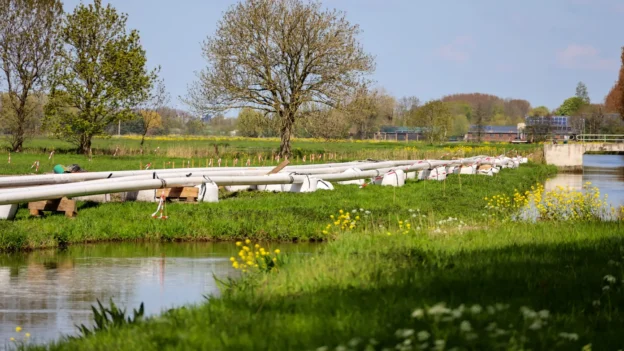In 2025, the United States will experience the largest expansion of its gas infrastructure in nearly two decades, with a total of 12 pipeline expansion projects in Texas, Louisiana and Oklahoma. These projects will increase gas transportation capacity in the Gulf of Mexico region by 13%, according to estimates by the Energy Information Administration (EIA).
These works not only respond to the increase in gas production, especially in the Permian Basin, but also seek to feed the new wave of liquefied natural gas (LNG) terminals, which will begin operating that will start operating as of 2027.
Strategic projects and companies involved
Among the most prominent projects is the Rio Bravo pipeline, a 220-kilometer pipeline to be developed by Enbridge Inc. to supply NextDecade’s Rio Grande LNG complex in Brownsville. Also featured is the 589-kilometer Blackcomb pipeline, led by a consortium that includes Whitewater Midstream, MPLX LP, Targa Resources and Enbridge itself.
Another relevant company is Energy Transfer, which is building the 718-kilometer Hugh Brinson pipeline, with the goal of connecting West Texas to Dallas-Fort Worth and, from there, to feed export terminals and data centers.
To these are added Kinder Morgan, Williams Cos. and Enterprise Products Partners which recently announced with ExxonMobil ExxonMobil ExxonMobil an expansion of the Bahia pipeline, which is essential for transporting natural gas liquids to Houston. to Houston.
Why is this happening?
The expansion of gas pipelines has the purpose of strengthen U.S. leadership as the world’s largest exporter of natural gas . New LNG terminals, many under construction, aim to meet growing demand in Europe, Asia and Latin America, strengthening an export network that could transform the geostrategic role of the United States in the coming years.
On the other hand, in the Permian region of West Texas, there is so much gas that existing pipelines are saturated. This has even caused the price of gas in the area to drop below zero, causing companies to have to pay to take the excess away, so the new pipelines will alleviate this bottleneck.
Prospects against
However, the accelerated growth of fossil infrastructure has also generated opposition. Various environmental groups warn that these developments will consolidate the use of gas for several decades, slowing progress towards a clean energy matrix.
New infrastructure “locks in” greenhouse gas emissions. greenhouse gas emissionsemissions, making it almost impossible to avoid the worst effects of climate change.
Outlook for 2027
A similar amount of pipeline capacity is expected to be added by 2027 as will be installed by 2025, extending the investment cycle and cementing the U.S. as the epicenter of global energy infrastructure.
Source: Yahoo Finance


